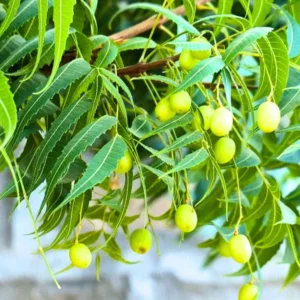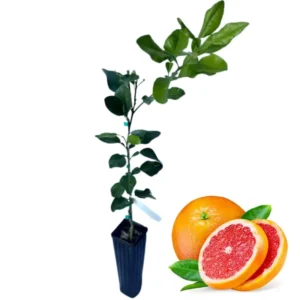-
×
 Neem Tree Plant Live, 4-9 Inch Tall, Hardy Neem Seedling for Outdoor Growing, Neem Plant Live
$39.99
Neem Tree Plant Live, 4-9 Inch Tall, Hardy Neem Seedling for Outdoor Growing, Neem Plant Live
$39.99 -
×
 Carambola Starfruit Tree Grafted Live Plant, 2-3 Feet Tall in 3 Gallon Pot, Sweet Star Fruit Tree Plant for Planting, No CA, HI, PR, GU, AK
$162.99
Carambola Starfruit Tree Grafted Live Plant, 2-3 Feet Tall in 3 Gallon Pot, Sweet Star Fruit Tree Plant for Planting, No CA, HI, PR, GU, AK
$162.99 -
×
 Ruby Red Grapefruit Tree Live Plant in Pot, 1 to 3 Ft Tall, Live Pomelo Tree for Growing, Can Not Ship to TX, FL, AZ, CA, LA, HI
$112.99
Ruby Red Grapefruit Tree Live Plant in Pot, 1 to 3 Ft Tall, Live Pomelo Tree for Growing, Can Not Ship to TX, FL, AZ, CA, LA, HI
$112.99
Guide
Red Twig Dogwood: Comprehensive Plant Care & Growing Guide
Are you looking for a vibrant, eye-catching plant to liven up your garden all year round? Meet the red twig dogwood (Cornus sericea), the shrub that steals the show in every season. With its bright red stems that glow against the winter landscape, delicate spring blooms, and berries that attract wildlife, this shrub is a gardener’s dream. In this guide, we’ll explore everything you need to know about growing and caring for red twig dogwood in your own garden.
About the Red Twig Dogwood
Red twig dogwood, also known as red osier dogwood, is a deciduous shrub native to North America. It thrives in moist environments, often found along riverbanks, wetlands, and forests. Known for its vibrant red stems that stand out in winter, this shrub is a favorite among gardeners looking to add color to a winter landscape. In addition to its ornamental appeal, it plays a crucial role in supporting wildlife, and providing food and shelter for birds and pollinators.

This shrub isn’t just a winter stunner—red twig dogwood is a seasonal beauty. In spring, it produces small white flowers, followed by white or bluish berries in late summer. In fall, the leaves turn shades of purple and red, giving the shrub even more seasonal interest.
Varieties of Red Twig Dogwood
There are several popular varieties of red twig dogwood, each offering something a little different for gardeners:
-
‘Baileyi’: This variety is known for its deep red stems, which provide stunning winter color. It grows around 6–9 feet tall and is ideal for hedges or erosion control.
-
‘Arctic Fire’: A more compact variety, ‘Arctic Fire’ grows 3–5 feet tall, making it perfect for smaller gardens or container planting. It still boasts the vibrant red stems that make dogwoods so popular.
-
‘Flaviramea’: Known as yellow twig dogwood, this variety offers striking yellow stems instead of red. It provides a beautiful contrast when planted alongside red twig dogwood.
-
‘Isanti’: This dwarf variety grows to about 4 feet tall and wide, making it a good choice for gardeners with limited space who still want the bold color of red stems.
Planting Red Twig Dogwood
If you’re wondering when, where, and how to plant red twig dogwood, these tips will help ensure it thrives in your garden.
When to Plant Red Twig Dogwood
The ideal time to plant red twig dogwood is either in early spring or fall. Planting in spring allows the shrub to establish itself before the heat of summer while planting in fall gives the roots time to grow before winter sets in. Both seasons offer moderate temperatures, making it easier for the plant to adjust to its new environment.
Where to Plant Red Twig Dogwood
-
Light Requirements: Red twig dogwood thrives in full sun to partial shade. For the most vibrant red color in the winter, plant your dogwood in full sun. However, it can tolerate partial shade, though the red stems might not be as vivid.
-
Soil Preferences: This shrub is extremely versatile when it comes to the soil but prefers moist, well-drained soil. It’s beneficial in areas with poor drainage or wet soils, as it tolerates soggy conditions better than most shrubs. Red twig dogwood is often used in rain gardens or near bodies of water where it can help control erosion.
-
Location: Red twig dogwood is great for naturalizing an area, stabilizing banks, or filling out a landscape. It’s also a wonderful backdrop for a winter garden or mixed shrub border. Make sure to give it plenty of room to spread out, as most varieties can grow between 6-9 feet tall and wide.
How to Plant Red Twig Dogwood
Follow these simple steps to plant your red twig dogwood successfully:
-
Dig the Hole: Dig a hole that is twice the width of the root ball and just as deep. This gives the roots plenty of room to spread out and establish themselves.
-
Amend the Soil (if necessary): If your soil is heavy clay or very sandy, you might want to mix in some compost or organic matter to improve drainage and nutrient content. Red twig dogwood prefers slightly acidic to neutral soil, so check your soil’s pH if you’re concerned.
-
Remove the Plant from its Container: If your dogwood is in a container, gently remove it by turning the pot on its side and tapping the sides to loosen the soil. Be careful not to damage the roots. If the roots are tightly bound or circling, loosen them gently with your hands to encourage outward growth.
-
Place the Plant in the Hole: Position the plant in the hole so the top of the root ball is level with or just above the soil surface. Avoid planting too deep, as this can cause poor drainage and root rot.
-
Fill the Hole: Backfill the hole with the soil you removed, making sure to tamp it down gently to remove air pockets. Water thoroughly after planting to settle the soil.
-
Water Deeply: Water the plant thoroughly right after planting to help it settle in and begin establishing its roots. Keep the soil consistently moist, especially during the first growing season, to help the plant become well-established.
-
Mulch: Apply a 2-3 inch layer of organic mulch (like shredded bark or compost) around the base of the plant, keeping it a few inches away from the trunk. Mulching helps retain moisture, keep the roots cool, and prevent weeds.
Growing Red Twig Dogwood
While red twig dogwood is relatively low-maintenance, it thrives with some basic care. Here are the top tips to keep your plant healthy and looking its best:
-
Watering: Red twig dogwood loves moisture. Water deeply once a week, especially during dry periods. The plant is drought-tolerant once established, but regular watering will keep it lush and thriving.
-
Mulching: Apply a layer of organic mulch around the base of the plant to help retain moisture, regulate soil temperature, and prevent weeds.
-
Fertilizing: In early spring, apply a balanced, slow-release fertilizer to encourage healthy growth. Follow the package instructions for dosage.
-
Pruning: To maintain the plant’s signature red stems, prune back older branches (those older than 3 years) in late winter or early spring. The brightest red color comes from younger stems, so regular pruning keeps the plant vibrant. Cut the older wood down to the base of the plant.
-
Pest and Disease Control: Red twig dogwood is generally pest and disease-resistant, but it can occasionally be affected by leaf spot or powdery mildew. Proper spacing and good air circulation can prevent most problems.
Benefits of Red Twig Dogwood in Landscapes
Beyond its ornamental value, red twig dogwood serves many practical purposes in landscaping:
-
Erosion Control: This plant’s extensive root system helps stabilize soil, making it a great choice for stream banks, slopes, or areas prone to erosion.
-
Wildlife Support: The berries produced by red twig dogwood are a favorite of birds, including robins, bluebirds, and cardinals. Insects also enjoy its flowers, contributing to local biodiversity.
-
Seasonal Interest: With colorful stems in winter, flowers in spring, berries in summer, and foliage that turns purple in fall, red twig dogwood ensures your garden is never dull.
One of the most amazing things about the red twig dogwood is its incredible ability to transform its appearance across the seasons. In spring and summer, the dogwood offers a subtle beauty with its lush green foliage and white flowers. But when winter comes, the leaves fall off, revealing bright red branches that make the landscape more vibrant than ever. Below is an illustration of this magical transformation.

Best Companion Plants for Red Twig Dogwood
Red twig dogwood pairs beautifully with a variety of other plants, adding texture and contrast to your garden.
-
Evergreens: Pair red twig dogwood with junipers, boxwoods, or spruces to create a striking contrast in winter when the evergreen foliage highlights the vibrant red stems.
-
Ornamental Grasses: Grasses like fountain grass or switchgrass bring soft, airy textures to the landscape. Their tan or bronze hues complement the red stems beautifully in winter.
-
Winter-Blooming Plants: Combine red twig dogwood with plants like witch hazel or hellebores to create a winter garden that’s full of color and interest.
FAQs About Red Twig Dogwood
Here are some frequently asked questions to help you troubleshoot or better understand red twig dogwood care:
-
Does red twig dogwood grow fast?
Yes! It’s a fast-growing shrub that can reach its full height of 6–9 feet within a few years, making it ideal for quickly filling out a garden space. -
How can I get the brightest red stems?
Prune older branches regularly in late winter or early spring. The brightest red stems come from newer growth, so removing older wood will encourage fresh, vibrant shoots. -
Can I grow red twig dogwood in containers?
While red twig dogwood can be grown in large containers, it generally does better in the ground, where its roots have room to spread.
With its striking appearance and easy care, red twig dogwood is a fantastic addition to any garden. Whether you want to control erosion, attract wildlife, or simply add seasonal beauty to your landscape, this versatile shrub will not disappoint.
Related content: 4 Best Flowering Dogwood Trees to Beautify Your Garden
Are you ready to brighten up your garden with red twig dogwood? Share your experiences, or if you’re a fellow dogwood enthusiast, drop your tips in the comments!

 Carambola Starfruit Tree Grafted Live Plant, 2-3 Feet Tall in 3 Gallon Pot, Sweet Star Fruit Tree Plant for Planting, No CA, HI, PR, GU, AK
Carambola Starfruit Tree Grafted Live Plant, 2-3 Feet Tall in 3 Gallon Pot, Sweet Star Fruit Tree Plant for Planting, No CA, HI, PR, GU, AK  Ruby Red Grapefruit Tree Live Plant in Pot, 1 to 3 Ft Tall, Live Pomelo Tree for Growing, Can Not Ship to TX, FL, AZ, CA, LA, HI
Ruby Red Grapefruit Tree Live Plant in Pot, 1 to 3 Ft Tall, Live Pomelo Tree for Growing, Can Not Ship to TX, FL, AZ, CA, LA, HI 



